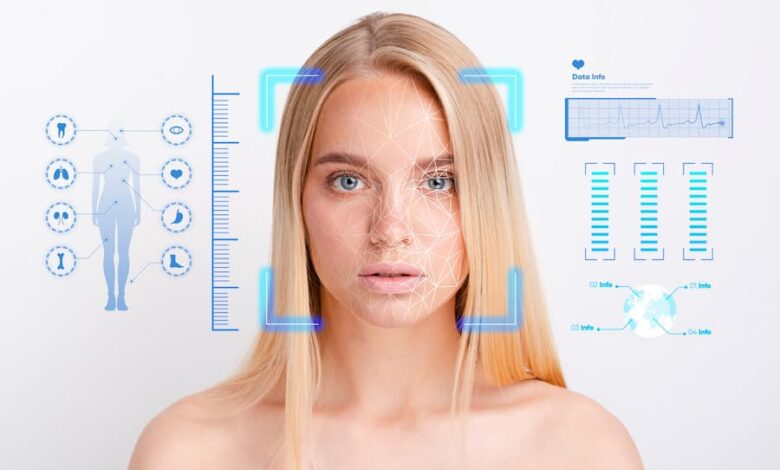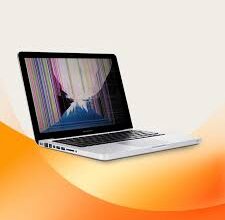The Evolution of Facial Recognition: From Theory to Real-World Use

Facial recognition has become a widely spread technology whose multiple applications range over disciplines: securing identity, maintaining a healthy system, and many more, all thanks to better power in the world of computations and artificial intelligence plus biometrics systems. Its developmental stages reflect both the brighter side – its present, developing applications that bring along some benefits – and so not-so-bright aspect with challenges that future technologies will also likely face if applied to use among humans.
What is Facial Recognition?
Facial Recognition is a biometric authentication technology that validates or authenticates a person based on identification and matching facial features. Distances between the eyes, the shape of a nose, and the jawline define who needs to be studied for face recognition and compare those images captured against the stored data of faces within the database to determine whether or not there’s a match or resemblance. Being algorithm and AI-based, it makes this technology one of the most advanced forms of biometrics face recognition. But how did it all start, and what fueled its mass use in today’s world?
When Was Facial Recognition Technology Invented?
The history of facial recognition technology dates back to the 1960s when researchers first began exploring the possibility of automating human face recognition. In 1964, the American computer scientist Woodrow Wilson Bledsoe initiated one of the very first efforts in this domain, making a computer to analyze facial features. The first such system needed manual measurements for all the major features of the face, such as the distance between the eyes. With the passage of years, the world changed from primitive systems to the advanced machine learning-based systems dominating the market today.
In the 1990s, meaningful enhancements appeared along with further automated systems, including the development of methods such as eigenfaces, which were statistical methods that reduced the dimensionality of the face space and sped up the recognition process. By mid-2000, the usage of facial recognition software began to gather pace, mainly because of improvements in computational power and the availability of larger facial databases.
How Does Facial Recognition Technology Work?
Understanding how facial recognition works involves the processes related to face detection, image capturing, and feature comparison. There are generally three stages of processes in which this system works, namely:
Face Detection: It first identifies that there is a face within the image and distinguishes it from any other object surrounding it.
Feature Extraction: The system then extracts facial features, including the distance between the eyes, nose, and mouth. In some advanced algorithms, it analyze texture, skin tone, and unique characteristics.
Face Matching: Then, the system compares the features to a known database of faces, returning the closest match or verifying the identity of the person based on the data provided.
The facial recognition technology being used by AI is based on machine learning; hence, as it learns and gets exposed to massive datasets of faces, with the passage of time, the processes of the system keep improving for accuracy.
From Concept To Reality: Technology Facial Recognition
The last couple of years have seen technology evolve for facial recognition and take its applications to different walks of life. The biggest improvement showed up from facial recognition AI technology in giving systems higher accuracy and greater speeds. The technology matured from the research lab to the real world, in areas like smartphones, law enforcement, and retail.
The breakthrough is the latest development by Google when they experimented with facial recognition technology. Furthermore, commercial applications appear to be gaining momentum. Corporations like Google have invested much work into facial recognition because of its potential application in different aspects of daily life. Thus far, consumer electronics have gained widespread commercial acceptance in this aspect. The most significant landmark, of course, would be smartphone integration, and what Apple did in this regard through Face ID, is marry security with convenience through the application of its face recognition technology.
Benefits of Facial Recognition Technology
There are many advantages of Facial Recognition Technology, and these may explain its growing adoption across different sectors. Security is one of the main advantages of facial recognition because facial recognition for security is appropriate for risky areas such as airports, government buildings, and military installations. A person can be identified and his or her possible threat assessed quickly in real-time by security personnel through the use of this technology.
However, consumer electronics are important. Facial recognition has become a way of unlocking smartphones, tablets, and laptops that offer authentications that are secure and easy to use. Biometric facial recognition, as noted, is convenient when utilized in the financial sector as a secure method of payment verification and fraud prevention.
In addition to this, facial recognition technology companies have also started providing solutions in the health sector, where the identification and tracking of patients can be streamlined. Patients can be identified, medical errors avoided and even their health monitored by interpreting the expressions on their faces through this technology.
Pros and Cons of Facial Recognition Technology
However, it is the application of facial recognition technology that mostly determines the ratio of pros over cons. Facially, this technology has proven to be one of the more beneficial technologies around, especially regarding security, efficiency, and convenience in personal and professional settings. For instance, businesses can make use of the facial recognition method to track attendance, while airports can make boarding much easier through the automation of identity checks.
However, the technology has its limitations. One very important issue concerning privacy arises. There is a statement that mass surveillance will be unpreventable from the widespread employment of facial recognition, and methods of data accumulation, storage, or use become suspect. Misapplication, including disclosure without authorization, or over-invasive monitoring, forces some governments into calling for significant regulation of usage.
The third concern is bias. Most facial recognition algorithms have been proven ineffective in recognizing an individual from a racial minority group and females. The main criticisms, therefore, relate to the lack of inclusiveness in the training datasets for such systems and wrongful identification or discrimination.
Role of Facial Recognition in Security
Arguably, security facial recognition has been one of the significant growth drivers. Law enforcement agencies, airports, and even the local government began using facial recognition systems to advance public safety. For instance, many airports have used facial recognition for traveler security checks and done away with the passport control lines that were manually conducted. The technology helps law enforcement track suspects or locate missing people by matching face images against databases.
The increasing use of facial recognition technology in security applications has led to debate on civil liberties and personal rights. Civil liberty advocates argue that the technology cannot be used within public areas unless there is expressed consent. In this regard, governments and organizations face the issue of weighing the pros of facial recognition technology against protecting privacy and morals.
The Future of Facial Recognition Technology
Prospects of Face Recognition Systems look bright into the future, though everything depends on how the question of privacy and ethics will be answered by society in general. Future systems are likely to become even more precise and sophisticated. For example, the future may bring systems that not only can identify a face but also analyze emotional states or anticipate what a person might do on the basis of facial expressions.
Future usage may be also extended by interlinking face recognition with various other emerging technologies, such as augmented reality, the Internet of Things (IoT), and various types of biometrics. Biometric-based face recognition systems shall be used within vast applications, extending through personalized shopping and effective healthcare monitoring.
This is to say that more control would have been exerted on the face recognition system about how it is implemented. Already, the world’s governments are looking at how legislation can be enacted to cover the use of face recognition. This will take place in line with having responsible and proper usage of the face recognition system. The world will witness far more transparency, responsibility and accountability since the involved companies will also have the responsibility regarding data security, as well as its privacy.
Conclusion
Indeed, facial recognition technology has undergone significant changes from the initial measurement by human operators to its current more sophisticated AI-based system. Face recognition AI technology has moved at a super-fast pace with advancements, making it an integral part of most security systems, consumer electronics, and even healthcare industries. There is much that can be seen as being in favor of face recognition technology, such as increased security and greater convenience. Problems of privacy and ethics and probable bias are shed out by the facial recognition technology pros and cons. This will make the future more regulatory for facial recognition technology and its system, which will change to be highly technological and sensitive to its real impact on society in the future.
This facial recognition system no doubt will mold our ways of living with technology and among each other. But it will also require responsible balancing between innovation and responsible usage so that benefits may be reaped without personal liberties being affected. Visit Paid Services for more informative blogs.


